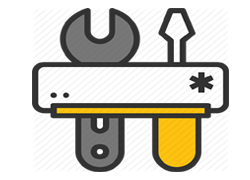
Your wheels may have to be lined up if:
You experience vibration when turning
The steering wheel pulls to the left or right
The steering wheel is not straight when driving on a straight roadway
Your tire tread is wearing unevenly
An alignment check features:
Assessment of the steering and suspension components
Examination of the tires for size, inflation and wear
Comparison of your tire alignment to automobile manufacturer guidelines

New and seasonal tire installations performed by the experts at Tire & Service Network locations include, among other things:
Removal of the wheels
Removal of the old tires from the wheels
Inspection of lug nuts and wheels
Installation of new valve stems as needed
Mounting and sealing the new or seasonal tires
Inflating and balancing each tire
Replacing the wheels on your vehicle with the new or seasonal tires on them

Rotating your tires is an essential part of the regular maintenance to your vehicle. The purpose of rotating the tires is to achieve a more uniform wear for all of your tires, saving you money in the long run. Refer to your owner’s manual for the recommended interval to rotate the tires. If this is not available, vehicle manufacturers recommend that you use the same interval as changing the oil and filter (every 7,500 miles or 12,000 km, or 6 months—whichever occurs first) to rotate your tires. The more you pay attention to tire rotation and tire inflation, the longer the tires will last.

Tires are the connection between your vehicle and the surface of the road. A critical part of your vehicle’s suspension system, tires are responsible for transmitting the forces of driving, steering, and braking to the surface of the road. Although tires are easily maintained, they are often overlooked. The air inside your tires and the design of the tire influence vehicle performance, tire tread life, and ride comfort. Tire maintenance is vital for getting the most out of your tires by maximizing mileage and tread wear.

Tire balance is the action of correcting the balance of the tire and wheel assembly. The tire and wheels are placed onto a wheel balancing machine to determine if any weights (stick on, clip on, or press on) are required to rebalance the assembly. However, these types of wheel balancers are limited to what kind of diagnosis they can provide to eliminate vibrations. If a wheel assembly has excessive lateral run-out (side to side movement while rotating), adding weight will not correct the balance but may mask the concern. When spinning the wheel assembly on the balancing machine, an experienced installer can detect both lateral and radial run-out and recommend further inspection.

Semi Truck & Trailer Tires, New , Used & Retreaded